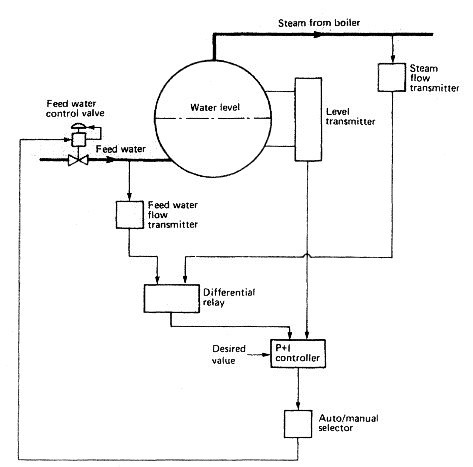The next stage is to monitor this movement and to use it to control either.
Shell boiler level control system.
In horizontal shell boilers the water level rises with increasing load due to the presence of more steam being below the water level in the boiler.
Identify the fuel to be used and if necessary where and how the fuel reserve is to be safely stored.
Levels at the control point hardly change with load or feedwater flow rate.
Level control systems with sensors or probes that fit inside of a boiler shell or steam drum provide a higher degree of safety than level control systems installed externally.
Far fewer steam bubbles are formed so water level drops rapidly in the boiler shell.
A float is mounted in the boiler.
As it does so the water surface area steam release area will decrease because as the water level is above the centre line of the boiler the sides of the containing shell converge.
Actions based on probe signals include.
The float will move up and down as the water level changes in the boiler.
Low alarm may sound.
Advantages of shell.
Select the control systems that allow the boiler to operate safely and efficiently.
Select the control systems that will support the boiler in supplying dry steam to the plant at the required pressure s and flowrate s.
The three element drum level control is ideally suited where a boiler plant consists of multiple boilers and multiple feedwater pumps or where the feedwater has variations in pressure or flow.
Size of the boiler shell.
The system used in steam boilers is very similar.
Opening or closing a relay.
Control in external chamber with low connection or in long length protection tube.
Waves caused by sudden load swings.
A feedpump an on off level control.
This may be in an external chamber or directly within the boiler shell.
Level in boiler is high but control is stable.

